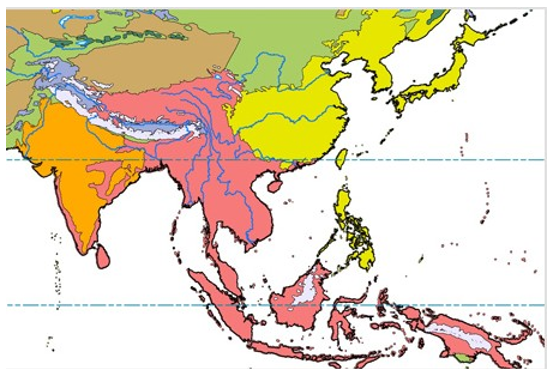Burkina Faso and the Keita project in Niger demonstrate that
A) corrective management measures can successfully reverse soil degradation.
B) sustainable soil conservation efforts are impossible once soils are degraded.
C) despite human efforts, natural climate cycles may prevent sustainable practices.
D) desertification is a natural result of climate variation.
A
You might also like to view...
The success of emissions trading programs in limiting pollution depends primarily on
A. the size of the initial cap only. B. how often the cap is lowered only. C. the size of the cap and how often it is lowered. D. the danger of the pollutant being limited. E. the participation of local airports.
In the map below, pink represents

A) subtropical scrub and woodland.
B) desert.
C) rain forest.
D) grassland.
What factors account for the Corn Belt's decline in agricultural production during the past two decades, especially as compared to the region's tertiary and quaternary sectors?
What will be an ideal response?
A study by the Environmental Protection Agency looked at the costs and benefits of the Clean Air Act from 1970 to 1990. This study found that a middle-range estimate of the health and other benefits from cleaner air was $22 trillion. This amount was about __________________ than the costs of reducing the pollution.
A. 10 time lower B. 44 times higher C. 10 times higher D. 44 times lower